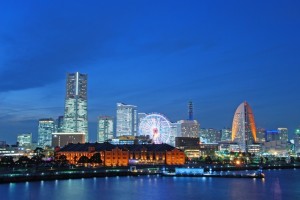In the UK the debate over devolution has moved on from the parliament and assemblies in Scotland, Wales and Northern Ireland to England’s cities, most notably in the north with Manchester, whose devolution deal has arguably progressed furthest, and where the debate was focused on what the first Greater Manchester mayor should be prioritising for the city and how they can argue for further powers when in position. Other city deals such as in Liverpool and the Tees Valley, the debate is now how to ensure the model is right for the region, while in Sheffield and Birmingham, there is still lingering scepticism about the concept of the mayor itself, with stakeholders questioning whether it suits their city region’s economic and political geographies. Devolution to the cities in England so far has been far from uniform.
Japan’s cities have a strong tradition of devolution and, unlike the UK city-region structures on the horizon, are uniform in their organisation and competences, particularly in respect of the so named ‘designated cities’ (seirei-shitei-toshi in Japanese meaning ‘city designated by government ordinance’, commonly shortened to seirei-shi for ‘designated city’). The first designated, and now largest by population of such cities is Yokohama, given the status in 1956 on September 1 along with Nagoya, Kyoto and Osaka, together becoming the first four appointed. Nagoya, Kyoto and Osaka in addition to their size had historically been the main regional cities in their part of Japan, with Kyoto also being historically important as former capital. As of 2016 there are 20 designated cities, which, in accordance with the law, were approved by the Cabinet of Japan’s Government following application by the municipality together with the surrounding prefecture. To meet the criteria to be given seirei-shi designation, municipalities must have populations over 700,000, meet population density requirements and have status as ‘centre of the region’, as well as carry out most public services within their jurisdiction rather than the prefectural government. They are further required to subdivide their jurisdiction into ‘wards’ in order to carry out basic functions such as resident registration and tax collection on a more local level.
The powers of the designated cities are widespread, being delegated many of the functions normally performed by prefectural governments in public education, social welfare, sanitation, business licensing and urban planning. The city government is generally delegated the various administrative functions in each area, with the prefectural government retaining authority over services which, while based in the designated city, may stretch beyond city boundaries and serve citizens in the surrounding prefecture. For example, pharmaceutical retailers and small clinics are licensed by designated city governments, but chemists and hospitals servicing the wider region are licensed by prefectural governments. Other competences of designated cities’ include taking revenue from and license sellers of ‘takarakuji’ tickets (Japan’s national lottery). Designated cities, due to their size, are also able to issue their own municipal bonds at affordable rates, in contrast to smaller local authorities who have the facility but not ability to effectively finance projects due to lack of investor confidence from markets dictating unaffordable higher interest for smaller municipalities.
They also are in receipt of a wide range of local taxes including local residents’ tax, business tax, vehicle tax, vehicle purchase tax, area consumption tax, property acquisition tax, as well as taxes on buying and selling of petrol and diesel, tobacco, golf courses, mining and hunting. This tax base means that on average 64.3% of local public spending is sourced locally without redistribution or reallocation from central government (compared to 22% through Council Tax raised directly in the UK for local authorities, as Business Rates are sent back to the Treasury for redistribution), but there are wide variations between the different cities in terms of how much funding can be raised locally, with big cities like Tokyo having greater concentration of companies and corporations, and the accompanying higher tax intake.
Yokohama City Mayor Ms Fumiko Hayashi leads Japan’s most populous designated city government with a population of 3,732,539 citizens, and claims Yokohama has become ‘Japan’s leading city’ through efforts to reduce overlapping services where roles have been duplicated with the surrounding prefecture. The reshaping of local authority structures and funding has lead to calls for further decentralisation and autonomy in the form of ‘special autonomous cities’, with Mayor Hayashi calling for a radical overhaul of local taxation, a call supported by the mayors of all 20 designated cities in 2010. Mayor Hayashi has called for further financial devolution in a ‘special autonomous city tax’ in order to reactivate the economies of large urban areas and their surrounding local authorities.
In both Japan and the UK there is now, more than ever, debate over the meaning of devolution and the course it should take, and what models are appropriate for localities. More details on Japan’s local government structures can be seen here in our Local Government in Japan (link to PDF) publication.
Picture used under Creative Commons licence 2.0, accredited to akumachu


